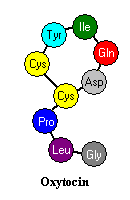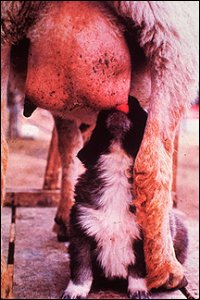What is Joint Pain:
Joint Pain Symptoms:
Joint Pains Causes:
Remedies for Joint Pain:
Joint Pain
As women get older they often suffer
from joint pain. Although this is a common ailment in both men and women
embarking on their golden years, joint pain is also a symptom of
menopause that can be eased with proper knowledge and treatment.
As a woman approaches menopause, typically between the ages of 45 and 55, her body goes through drastic hormonal fluctuations that can affect her in many ways. Hormones play a major role in a woman´s bone and joint health. When her hormones become imbalanced during menopause she will often experience joint pain. Continue reading to learn more about joint pain, its causes, and the treatment options available. |
About Joint Pain
Types of joints
• Ball and Socket Joints allow for a wide range of rotation and movement. The shoulder and hip are ball and socket joints.
• Condyloid Joints allow movement but no rotation. There are condyloid joints in the jaw and fingers. • Gliding Joints allow bones to glide past each other. There are gliding joints in the ankles, wrists and spine. • Hinge Joints allow for movement much like that of a door hinge. The knee and ulna part of the elbow are hinge joints. |
Women are 10 times more likely than men to suffer from joint pain in their hands.
|
Because joint pain is common in women approaching menopause, some have even coined the term "menopausal arthritis"
to describe this symptom. It can be an extremely discomforting ailment
and make simple tasks and movements almost unbearable. There are common
symptoms to help recognize joint pain.
|
Symptoms of Joint Pain
The symptoms of joint pain will depend on
the particular cause of the pain experienced, but the typical symptoms
of joint pain related to menopause include: pain, stiffness, swelling, and warmth
in the joints. Limited morning stiffness, exacerbation of pain with
exercise, and relief from pain with rest are also common symptoms in
women who suffer from joint pain.
Continue reading to learn the cause of joint pain to get a better handle on how to treat the common menopause symptom. |
|
Causes of Joint Pain
Like most
menopausal symptoms, joint pain is typically caused by hormonal
imbalance. As menopause approaches, a woman´s hormones begin to
fluctuate, preparing for a permanent decrease in production of the
primary hormones, estrogen and progesterone. Although doctors are still
unclear exactly how hormones, particularly estrogen, affect joints, most
are resigned to the fact that estrogen (specifically a diminished level
of estrogen) plays a major role in joint pain during menopause.
Estrogen affects joints by keeping inflammation down. Inflammation is a leading cause of joint pain. As estrogen levels begin to drop during perimenopause, the five-to-10-year time span leading up to menopause, joints get less and less estrogen and pain often is the result. |
Other Causes
There are several causes of joint pain not related to hormones. Below is a list of other factors that can cause joint pain:
• Wear and tear • Injuries • Weight, diet • Lack of exercise • Muscle loss • Stress • Heredity • Inflammation of the joint • Metabolic Disorders • Bone Diseases • Tumors and Cancer |
|
When to See a Doctor
Treatments for Joint Pain
Typically, combining lifestyle changes and alternative medicines
will produce the best outcome. Alternative medicines can be different
herbs and supplements, or even techniques like acupuncture. When seeking
out alternative medicines, keep in mind that because joint pain during
menopause is associated with hormone deficiency, look for supplements
that bring a natural balance to the hormonal levels, for this will go a
long way to alleviate joint pain.
|
- "Joint Pain." Family Health Guide. www.familyhealthguide.co.uk
- "Joint Pain and Estrogen Deprivation," Exax Health. www.examhealth.com
- "Osteoarthritis." www.menopause.org.uk
Here are Your Joint Pains Symptoms
Let’s Know About Your Cause of Joint Pains
Effective Home Remedy for Joint Pains
- Papaya: Make a fine paste using papaya seeds and boil it in water. Intake of this cup for two to three weeks gives you satisfactory results.
- Turmeric: Add half teaspoon of turmeric powder in lukewarm water. Drink it three times a day. It works very well in curing joint pains.
- Bathu juice: Regular intake of fifteen grams of bathu juice on an empty stomach gives you effective cure for joint pains.
- Olive oil: Mix two parts of olive oil and one part of kerosene oil. They both make a wonderful ointment for affected joints in body.
- Make a rubbing mixture of camphor, methyl salicylate, eucalyptus oil and menthol. It is very effective when applied to affected areas of joint pain.
- Carrot and lemon: Mix fresh carrot juice with equal parts of lemon juice. One large teaspoon of it daily can help you to get relief from pain.
- Honey: Mix two teaspoon equally of honey and apple cider vinegar in a small glass of warm water. Take it twice in a day. It is one of the most effective home remedy for joint pains.
- Mix two teaspoonful of winter cherry with ghee and molasses to make porridge. Eat this porridge with an empty stomach for fifteen days. It gives you beneficial results in quick time.
Treatment Of Joint Problems In Conventional Medicine
(Allopathic Medicine)
Treatment of joint problems is vary varied based on the
causes of the problem
Joint problems caused by Inflammation are treated by using
anti-inflammatory analgesics (pain medication) in the initial stages. Physical
therapy like rest, hot and cold packs are also used. If the inflammation is due
to auto-immunity, drugs known as “DMRDs” Disease Modifying anti- Rheumatic
Drugs are used. Steroids, Methotrexate, Hydro-chloroquine, Sulfasalazine and
several other compounds have emerged in the category of DMRDs over the years.
They are used over extended periods to keep the auto-immunity under check. They
are effective at keeping the inflammation under control and preventing damage
to the tissue but non-selectively suppress the immune system. They are known to
cause several severe adverse effects with prolonged use. A new class of drug
called TNF alpha inhibitors have come into use over the past few years and are
very effective in controlling the inflammation and protecting the joints. They
also have to be used over long periods of time, are very expensive and
treatment of Joint Problems due to degeneration, is very limited in scope and
mainly comprise of providing relief of joint pain through pain medication,
nutritional support by way of administering Calcium, Vitamin D, Glucosamine,
Chondroitin etc and Physical therapy to strengthening the muscles and other
structures that support the particular joint function. Persons not responding
to the same are advised to undergo Joint replacement surgery. Joint replacement
surgery is a great advancement in the management of severe degenerative joint problems
but has the limitation in terms of effective life of the replaced artificial
joint (Maximum of 10-15 years) and is also limited by the suitability of the
patient for surgery in terms of their general health condition and that of
Cardiac function in prospective patients.
Joint problems due to injury which are minor and are
self-limiting are managed by rest, immobilization, pain medication and physical
therapy. However several major injuries that do not respond to the conservative
approach are treated through surgical correction.
Ayurvedic Treatment For Joint Pain & Problems
The Ayurvedic approach to treatment is very individualized.
However the approach to treatment of patients suffering from Inflammatory
conditions differs significantly from that of Degenerative conditions.
It is seen that chronic joint problems tend to be similar
after a long time. Ie, if inflammatory conditions last long, they lead to
degeneration and degeneration over a long period of time leads to inflammation.
So patients who suffer from either of these conditions for a long period of
time will have combination of inflammation and degeneration which have to be
addressed simultaneously.
Ayurvedic Treatment Of Inflammatory Joint Conditions
According to Ayurveda, the initial stages of Inflammatory
conditions are considered to be associated with toxicity and are dealt with by
detoxification. Detoxification in Ayurveda is three prong. For mild level of
toxicity Ayurveda advocates very light food with warm fluids and rest. For
moderate level of toxicity, Ayurveda advocates administration of herbal
decoctions that help the liver to metabolize and eliminate the toxins. For
toxicity of a high degree, Ayurveda advocates Panchakarma (The five methods of
Cellular Bio-purification). Ayurveda also advocates a number of herbs that have
a very effective anti-inflammatory action, the main one is Guggulu and it is
one of the most important herbs used in Ayurveda for the treatment of
Inflammatory conditions. Ayurveda also employs a number of therapies like
Dhanyamladhara (Pouring of warm fermented liquid), Abhyanga ( Oil massage),
Podikkizhi (Herbal powder massage), Ilakkaizhi (Herbal leaf massage) and a
large variety of Vasthis (Enemas) which are very effective for inflammatory
conditions. Course of Vasthi as a continuous process numbering 8, 15 and 30 are
called Yoga Vasthi, Kala Vasthi and Karma Vasthi respectively and are very
effective in reducing very severe inflammation and restoring normalcy. It is
seen to be the main tool used in bringing down the inflammatory markers like
ESR, CRP etc significantly.
Ayurveda Approach To Degenerative Joint Conditions
Ayurveda also is very effective in addressing degenerative
skeleton-muscular conditions. Ayurveda recommends a holistic approach to
treatment comprising of diet, lifestyle, herbal medicines and therapies for
addressing degenerative joint conditions. There are many medicines in Ayurveda
that help to strengthen the joints and reduce the degeneration. Ayurvedic
physicians can choose ideal combinations for each individual. The therapies
like Tailadhara (pouring of medicated oils), Nhavarakkizhi (massage with bolus
of rice boiled in medicated milk) and Ksheera vasthi are among the most
effective therapies for preventing degeneration and to strengthening the
joints. It is very important to note that if there is associated inflammation,
the anti-degenerative therapy is advised only after the inflammation is brought
under control.























